This Week on Christmas Island: 50 Million Crabs Scuttle to the Ocean
October 29, 2020As soon as the first rains of the wet season hit Christmas Island, the largest animal migration in the world begins. There, on the Australian territory just south of Indonesia, millions of endemic red crabs (Gecarcoidea natalis) come crawling out of the jungle, blanketing footpaths and roads in their journey to the coastline. And there they mate and spawn, each female releasing upwards of 100,000 eggs into the ocean.
The entire process, described by David Attenborough as one of the 10 great natural wonders of Earth, can take up to six weeks to complete. In that time, the island becomes chaos – full of closed roads and tourists swarming to catch a glimpse. Then, the crabs will return to the forest, vanishing as suddenly as they came.
For an insight into what it’s like to witness this, we spoke to local wildlife photographer and Swell Lodge owner Chris Bray, who took the following photos. For the past five years, Chris has been documenting these legendary mass migrations in all their spectacular glory.
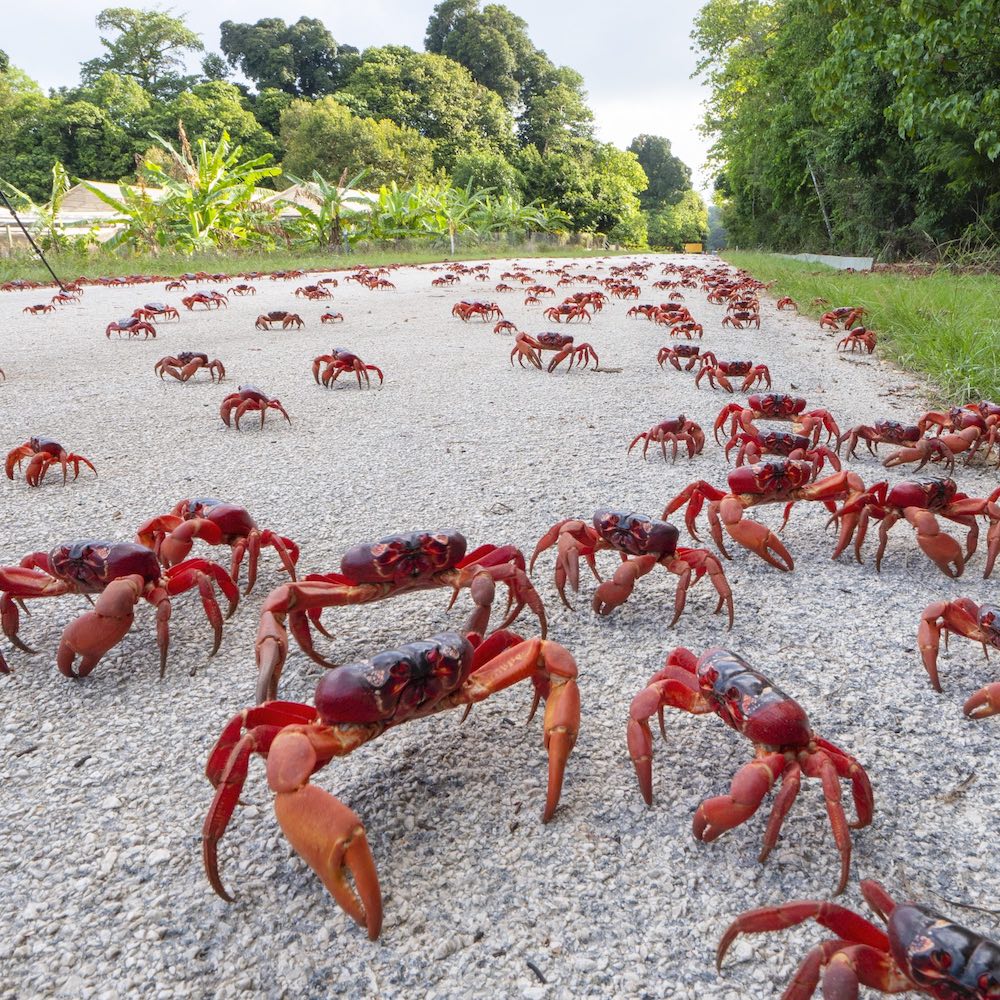
VICE: Hey Chris, can you tell us about what we’re seeing in these photos?
Chris Bray: Christmas Island is pretty famous for its red crab migration. A lot of people know of the island because of David Attenborough's documentaries, and it’s actually one of the largest animal migrations in the whole animal kingdom. We have about 40 or 50 million red crabs that live in the jungle, and towards the end of the dry season, they'll go into their burrows and sort of disappear for a little while. And then after the rain – which just happened last week – they all emerge, basically overnight. You’ll wake up one morning, and the whole forest floor is a red living carpet of crabs, all heading down to the coast to spawn.
There's a pretty cool feature out of town here on the main road, where the crabs get funnelled using little tiny fences about a foot high. Rather than just spilling out onto the road and getting crushed, the crabs get guided towards this massive bridge that arches over the road. All the crabs come up and go over the top of that bridge and then cars are going underneath. It's a cool little invention for them.
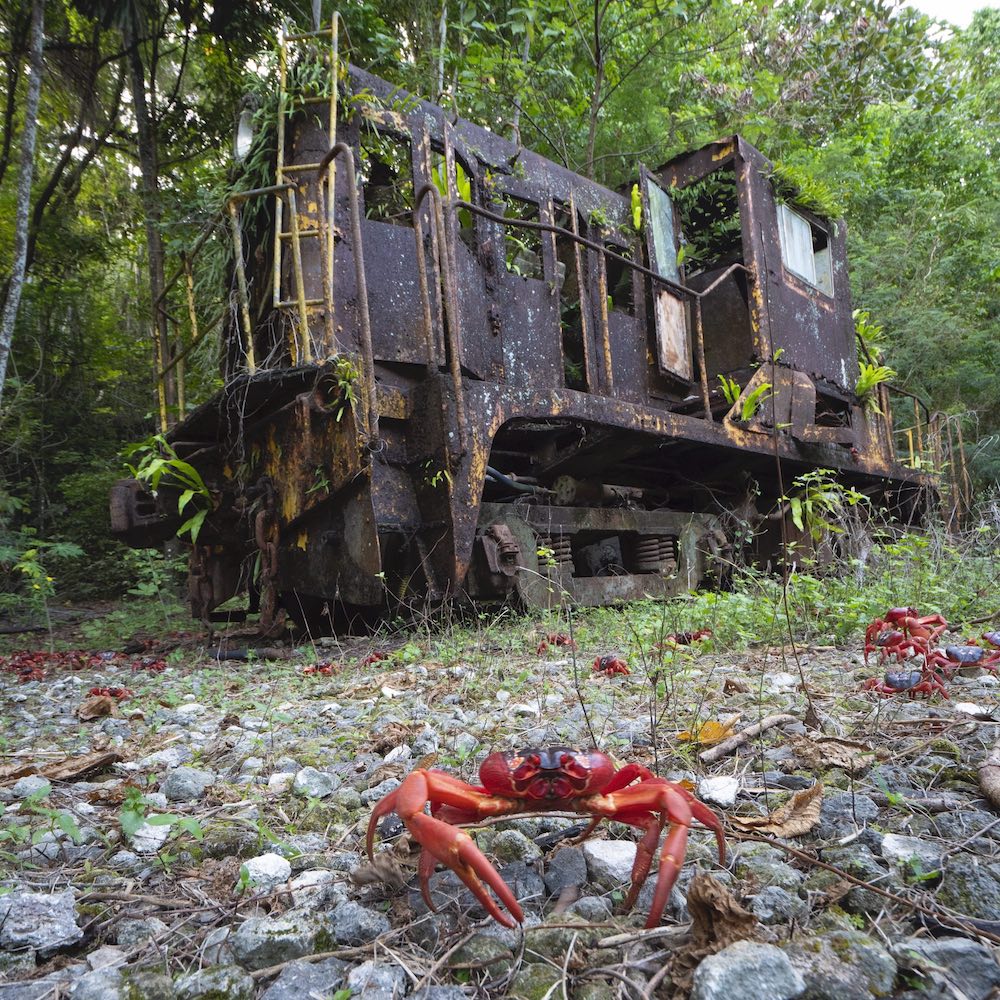
Can you describe what it’s like being in the middle of the migration? Can you hear the crabs coming?
You’d think crabs are pretty silent, but when you get millions of them all walking together through the forest, you can definitely hear a rustling sound which is just all these little legs walking together and treading on leaves. And when they hit one of those little man-made plastic tarpaulin fences and they're all rubbing up against the edge of that fence, it's quite a loud sound, like really loud rain on the roof. And then when they're climbing over the metal crab bridge, that just sounds pretty creepy, because you've got all these really sharp claw legs screeching and scraping on all the metal edges.
In terms of the smell, they don't smell at all unless they've got run over. And then later on in the season, when there's been a few more run over and it's getting hot and sunny, when you're walking through some of the areas where they might have been run over you can smell seafood.
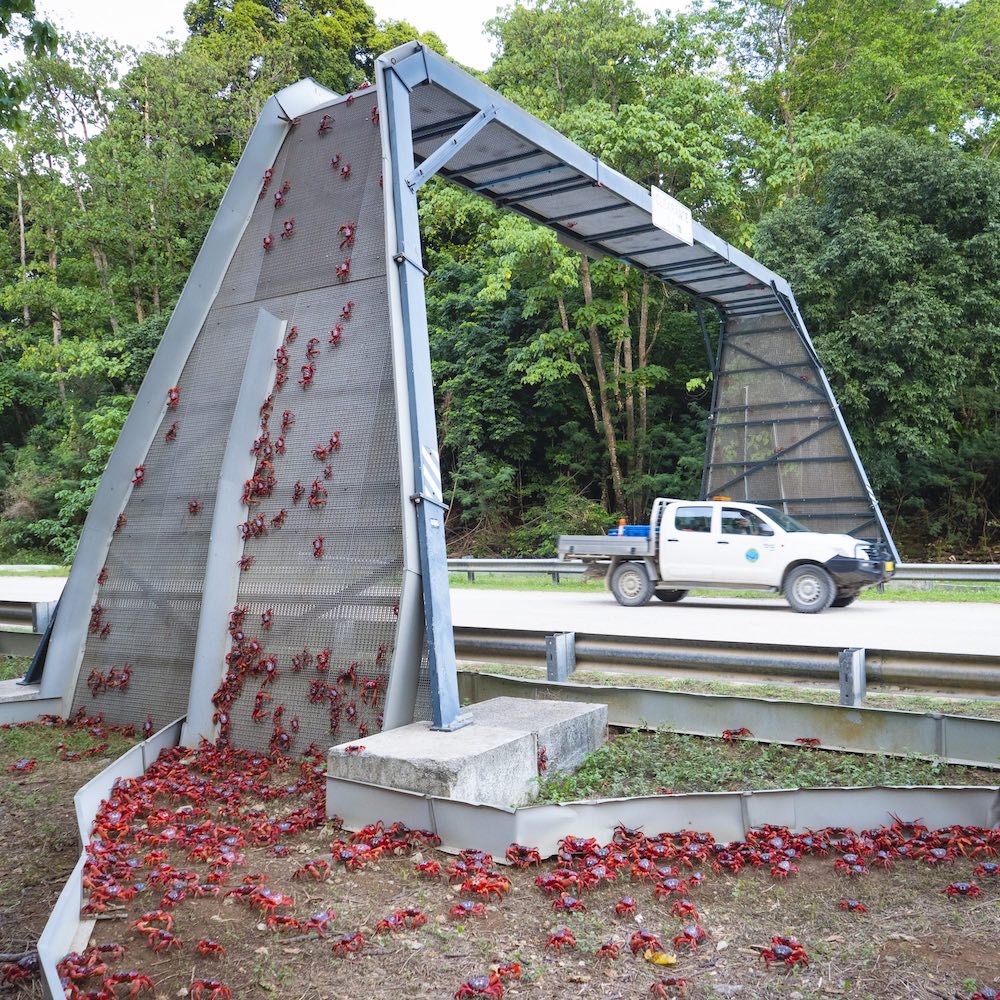
Is it common for them to get run over? Considering there are about 50 million crabs.
In years gone past, people just didn't care, and they drove over them willy-nilly. But gradually, over the last couple decades, people got more and more sensitive towards them. The parks would start to close roads, and initially, there was some backlash because the community didn’t like suddenly not being able to drive around. In the end though, the parks won over and pretty well everywhere on the island now loves it; they realise the crabs are one of the reasons the island is special, and they take a lot of care in looking after them. You're just not visiting parts of the island for a while or driving really slowly. Most people carry a garden rake in their car and then someone will get out and rake the crabs on either side to break them out of the way.
The thing about the crabs is you can't really avoid them. It makes it pretty fun to drive around here though, it's one of the few places in the world where you're quite expected to swerve onto the wrong side of the road and, like drive around these crabs. But you know, there's still inevitably some that get run over, maybe on a blind corner or something where you can't, you can't safely avoid them.
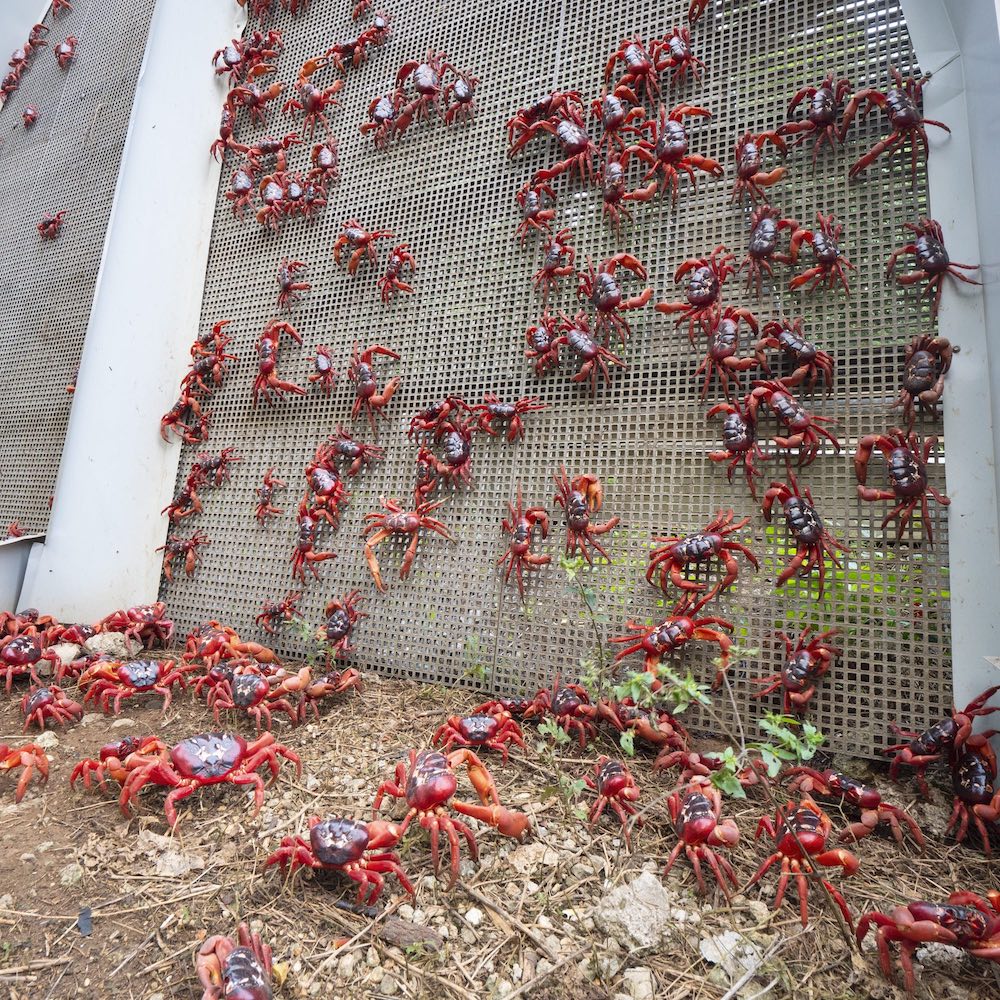
Are people typically excited when the migration happens? Or are they a bit ambivalent towards it?
I think it varies depending on people's jobs and what they need to do – whether it's just an imposition or makes life a bit difficult. But I think for most people, the overall impression is that they do like it: it's one of the one of the more interesting times to be on the island. And it's also pretty amazing to watch. I mean, I've seen many migrations here now, but it's still incredible. I'll still get up really early to go and watch them all crawling across the road.
Do people harvest the crabs? Or are they under some sort of protection?
They are protected, but they also apparently don't taste any good. Some people even say they're poisonous so you literally can't eat them. There's a bigger crab here called the coconut crab or the robber crab, and that does taste nice. It has been decimated on other islands around the world but here they are protected as well. It’s like a $5,000 fine if you run over one.
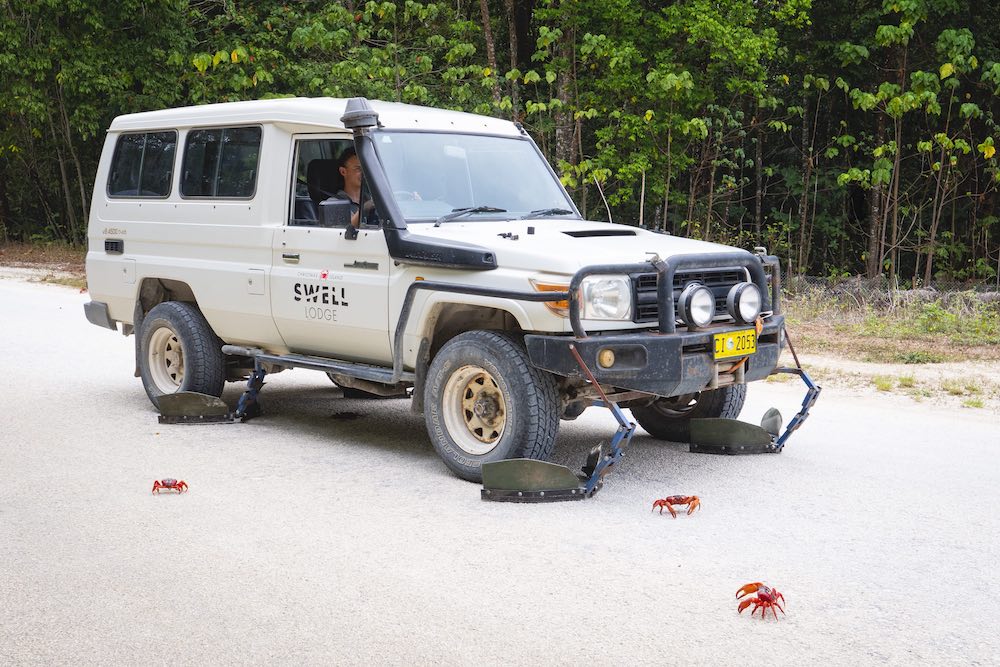
In the few years that you’ve been here, have you noticed any changes to the migration numbers?
Personally, I haven't noticed the numbers changing; I just only hear or see a fraction of them moving at a time and it always looks busy. But researchers here at the parks have done counts across the islands and they say that the numbers have dropped quite a lot over the last couple of years. There used to be about 100 million of these crabs, but then the yellow crazy ant was introduced which formed these huge colonies and wiped out a lot of the crabs. The crabs would migrate through the super colonies and the ants would swarm all over the crabs to just try and defend their territory.
In some areas there weren't many crabs left, but the parks have introduced a whole bunch of different techniques to get rid of the ants. Everything from helicopter aerial baiting to baiting on the ground. They’ve even introduced bio-control agents, like a wasp from Malaysia which parasitises the scale insect that the ants farm, cutting off their food supply, and reducing ant numbers.
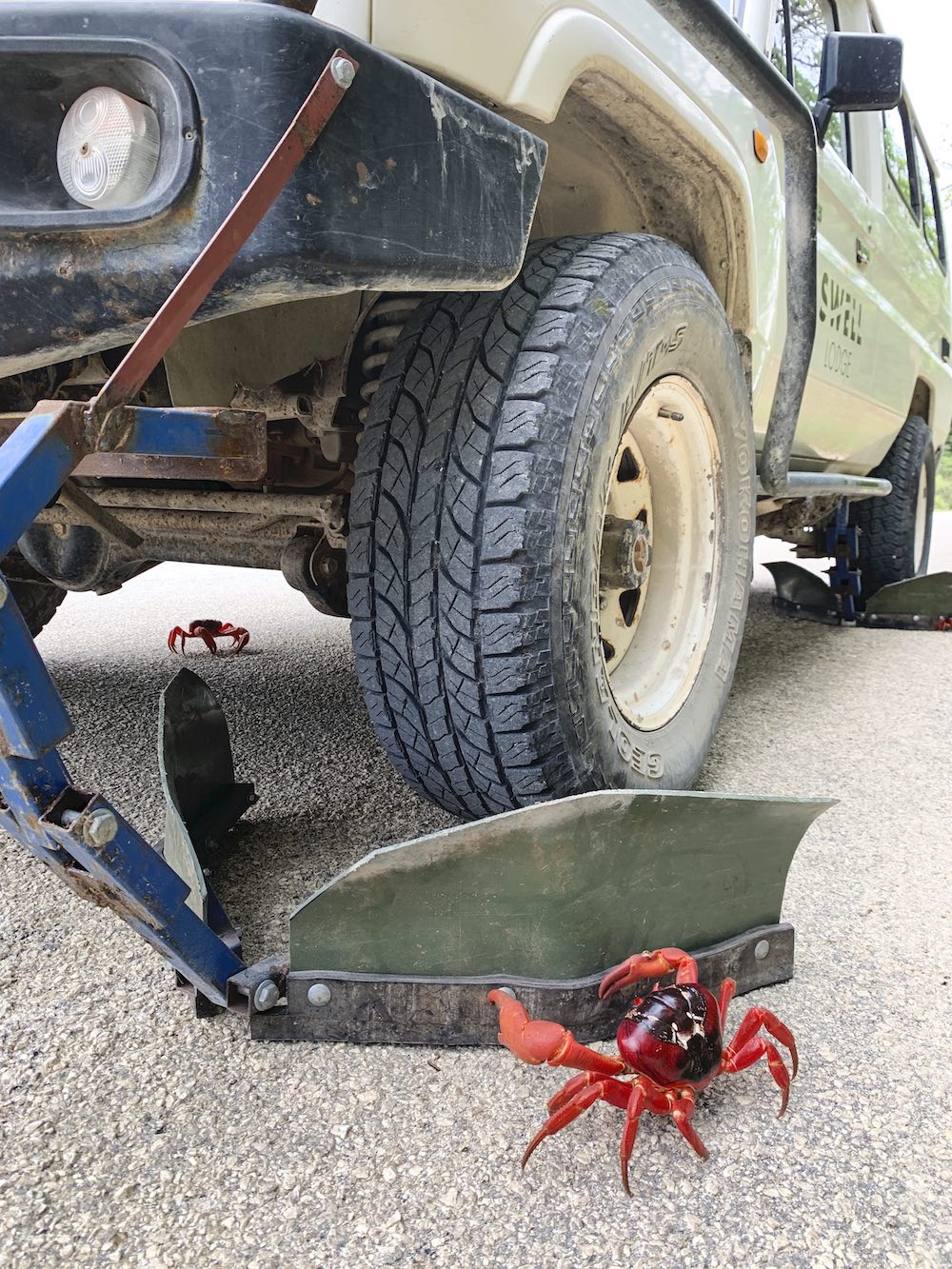
What effect has this had on the ecology of the island?
Of the island, 63 percent is national park and it's just jungle. The crabs normally eat every leaf that falls on the ground and every weed that starts to grow. Normally, the forest floor here is really unusual in that it's manicured to just bare earth, so you have all these amazing trees and then just brown soil. But when the ants take out all the crabs in the area, the crabs aren't there to eat the leaves, and you end up with a quite tangled understory full of weeds. It’s a visual effect that people have started to notice in areas that are more damaged, just weeds and stuff growing through.
Interview by Joseph Lew. Follow him on Instagram
Photographer Chris Bray is also on Instagram
